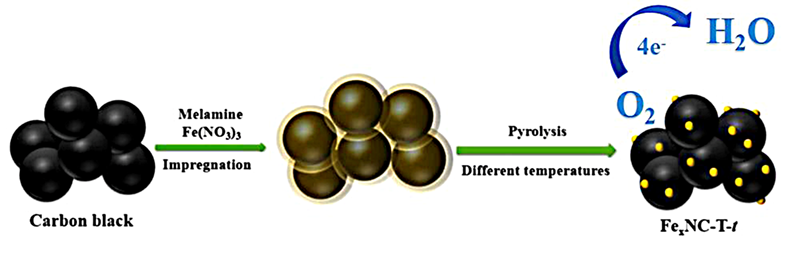
Cover Picture
Two Bisligand-Coordinated Luminescent Zn(II)-Coordination Polymers for Sensing of Ions and Pesticides in Aqueous Solutions
The demon mirror (Zhaoyaojing in Chinese) in the Journey to the West, a Chinese classical literature, can reflect the original shape of demons. Both as-prepared coordination polymers, [Zn(PTA)(DTP)(H2O)2]·(DMF) (CP-1) and [Zn(BTC)(DTP)]·(CH3CN)1.5·(H2O)4 (CP-2), can act as demon mirror to detect the different environmental pollutants. This image presented the magic demon mirror to reflect the presence of pollutants, the demons in environment, which provided an opportunity for the readers to appreciate Chinese traditional culture.
FeNC Catalysts with High Catalytic Activity and Stability for Oxygen Reduction Reaction
Yuan-Yuan Feng*, Hua-Shuai Hu, Rui-Jie Liu, Gao Deng, Xiang-Yu Wang and Meng Zhu
Chin. J. Struct. Chem. 2022, 41, 2209080-2209086 DOI: 10.14102/j.cnki.0254-5861.2022-0053
September 22, 2022
FeNC electrocatalyst, pyrolysis, oxygen reduction reaction, methanol tolerance, direct methanol fuel cells (DMFCs)
ABSTRACT






